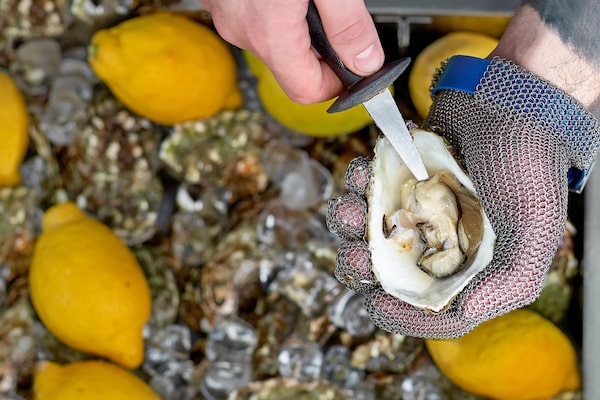
izikMd/iStockPhoto / Getty Images
Oysters – salty, sweet and sensual – are a luxurious treat.
Essentially there are five species of oysters in North America from which to choose, each with their own look and taste. The oysters are named for the water they grow in and similar to wine, they are affected by terroir – the salinity and temperature of the water, for example, will impact the flavour.
The best-known oysters in Canada are Malpeque from PEI, Beausoleil from New Brunswick and Kusshi from British Columbia. When purchasing oysters, it is more interesting to buy and sample a selection rather than just one kind.
And if you’re worried about the adage of only eating oysters in a month that contains the letter R, that is now considered a myth, thanks to modern farming, improved food safety techniques, and refrigeration. (However, oysters may not be as tasty during the summer months.) When buying oysters look for a tightly closed shell; they will feel heavy in your hand and smell of the sea. They should also be on ice.
Cooking 101: Lucy Waverman decodes cooking techniques everyone can master
Shucking oysters can be intimidating, so I met with Adam Colquhoun, the owner of Oyster Boy restaurant, for a quick lesson.
First, you need the right equipment. A good oyster knife is paramount; it should be small, with a pointed tip and strong. The handle can vary from a round cylinder to a regular knife handle. I prefer one with a blade protector, since you’re less likely to cut yourself.
A folded tea towel will keep the oyster from slipping and help protect your hand, although you may prefer to wear a heavy shucking glove. Place the oyster, flat side up, on the tea towel. Fold the tea towel over half the oyster, leaving the hinge end exposed. (The hinge, at the narrow end, is what keeps the shell together.) Hold the oyster firmly down with your hand and wiggle your knife into this hinge. Keep twisting and prying until the hinge releases. It is not so much strength that you need, as getting the right spot. Once the hinge is released, slide the knife around the shell. Remove the top shell and slide your knife under the little muscle that holds the oyster to the shell, being careful not to spill the oyster liquid.
Make sure you keep your oysters on ice before and after shucking.
Your oysters are now ready to be eaten out of hand or topped with your sauce of choice. These include mignonette – red wine vinegar mixed with finely chopped shallots and pepper – hot sauce, or grated horseradish, which is a European influence that looks gorgeous on an oyster tray. If you prefer a less salty flavour, sprinkle on a little lemon juice.
Remember to chew the oyster a little to get the taste of the terroir before letting it slide down your throat.
Need some advice about kitchen life and entertaining? Send your questions to lwaverman@globeandmail.com.
Live your best. We have a daily Life & Arts newsletter, providing you with our latest stories on health, travel, food and culture. Sign up today.
 Lucy Waverman
Lucy Waverman